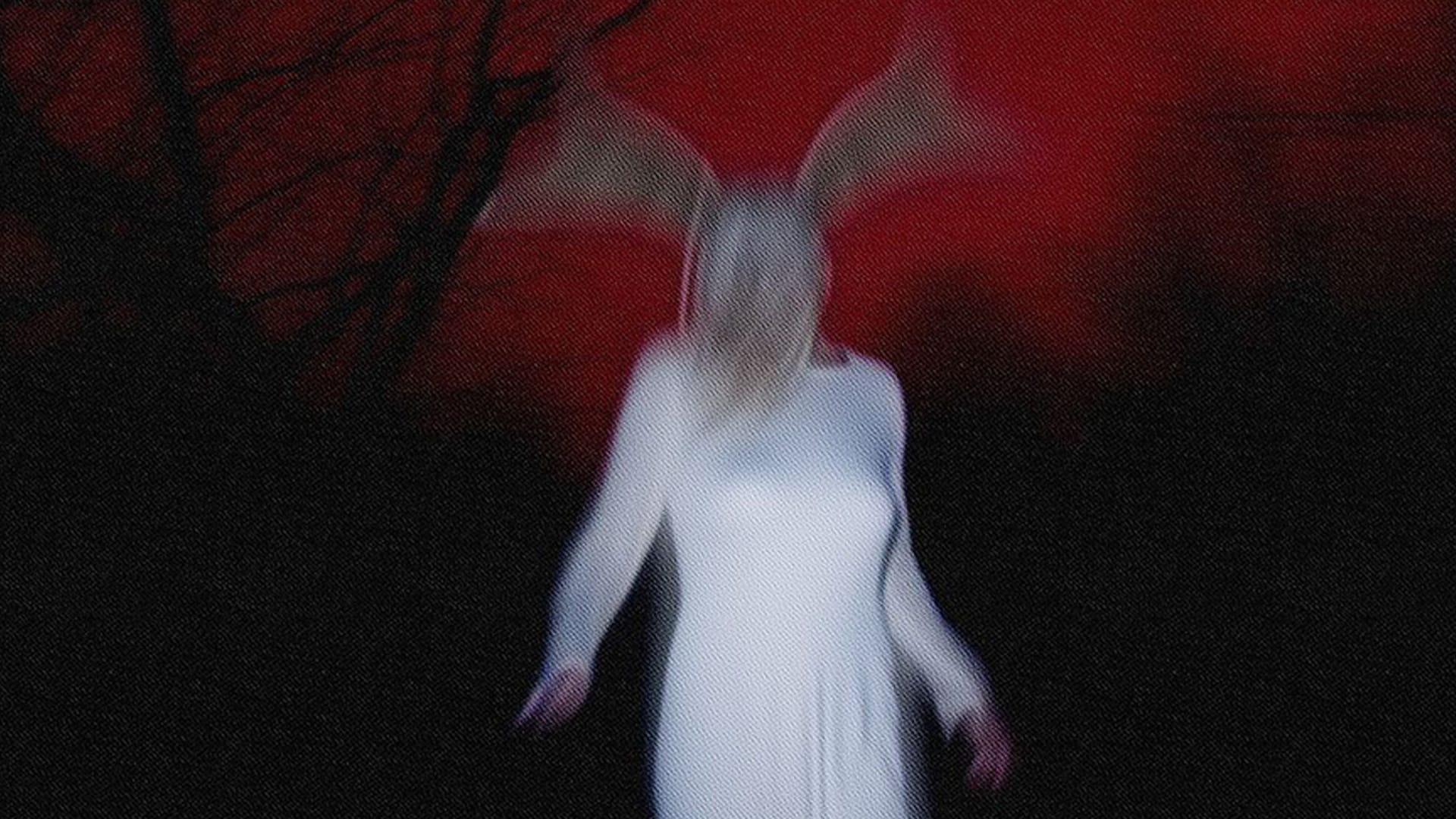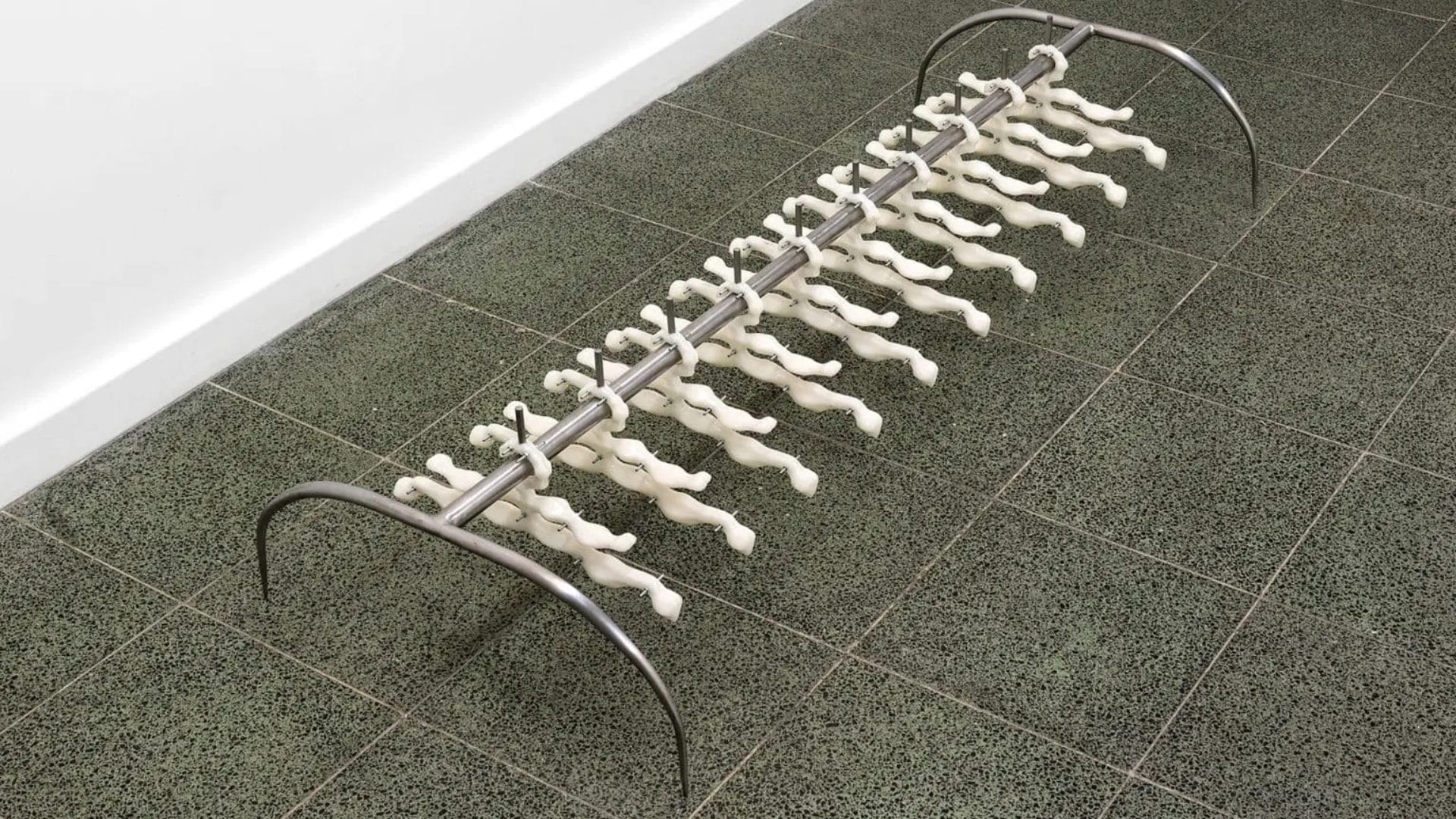
Lilian Kreutzberger, RAUHFASER at Kroller Muller Museum, Otterlo
RAUHFASER by Lilian Kreutzberger, curated by Benno Tempel, at Kroller Muller Museum, Otterlo, 1 September 2025 – 1 March 2026.
Should we have crossed the threshold of the Kröller-Müller Museum as if stepping into a space more mental than physical? Leaving behind the weight of the everyday, we asked ourselves, between one step and the next, what the world might become if every surface, every object, every element of our domestic or urban landscape were also a screen. Not a screen to watch, but one that watches us, speaks to us, reflects us back in endless images. With RAUHFASER, Lilian Kreutzberger doesn’t ask us to understand, she invites us to be permeated. As we moved through her near-future scenario, pulsing walls, speaking ceramics, marble that turns out to be a printed skin, we recognized something of our own in it. A kind of vertigo. A digital memory layered over matter.
The exhibition opens in a suspended atmosphere, a diffuse, meticulously calibrated light reveals without fully unveiling. Sound is muffled, almost absent, like an urban echo slowed down. The works resist being observed from a distance, they call us closer, surround us, absorb us. Wall sculptures, monumental installations, objects that seem borrowed from a house of the future, everything is arranged to unsettle our habitual visual hierarchy.
We move through a fluid path, with no prescribed direction but an evident pull toward interaction. An urban bench lit with blinking LEDs stands beside a slab that looks like marble but is revealed to be printed plaster, a ceramic surface emits light, as if containing a compressed emotion. The space becomes an experience, we are not mere visitors, we are bodies within an environment that watches us shift.
Materiality is the true fulcrum of Kreutzberger’s work. Nothing is chosen lightly, every medium is an incursion into possibility. Alongside cutting-edge technologies, screens, LEDs, digital interfaces, we find ceramics, plaster, paper. Everything is finely tuned to generate friction between what we perceive as “real” and what is merely image.
A striking example, a piece that, from afar, seems to be a carved marble relief, but at the touch proves to be just a shell, a digital skin. The hand and the eye contradict one another. And then there is the spatial installation evoking EMDR therapy, alternating lights, lateral movements, visual stimuli, here, technology doesn’t decorate, it heals. Even when it challenges, it does so to offer a new form of contact.
There is compositional intelligence in how craft and code are woven together, in how matter and image are manipulated side by side. Kreutzberger crafts an aesthetics of ambiguity, the surface is never just a surface, but a semantic field, a vessel of meaning, a mirror and a screen.
We leave RAUHFASER not simply as an exhibition, but as an exercise in presence, a sensory short-circuit that lingers in memory.
To those reading, touch with your eyes.
And then ask yourself, when everything becomes a screen, what will truly be left to see?








fakewhale
Founded in 2021, Fakewhale advocates the digital art market's evolution. Viewing NFT technology as a container for art, and leveraging the expansive scope of digital culture, Fakewhale strives to shape a new ecosystem in which art and technology become the starting point, rather than the final destination.
You may also like
FW Radar: 11 Digital Artists to Keep an Eye On
Introducing FW Radar, a new segment by Fakewhale that spotlights digital artists everyone should kee
Fakewhale in Conversation with Deniz Kulaksızoglu: Exploring Fragmented Bodies and Surreal Spaces
Deniz Kulaksızoglu’s work moves through territories where the exhibition space transforms into a
Dummy Armor at TEST_AREA_GALLERY, Digital Space
Dummy Armor by Mateusz Lengling, curated by LENG____LING, at TEST_AREA_GALLERY, Digital Space, 07/10




